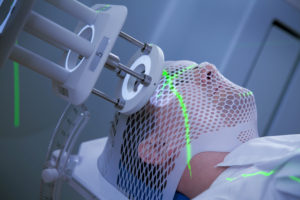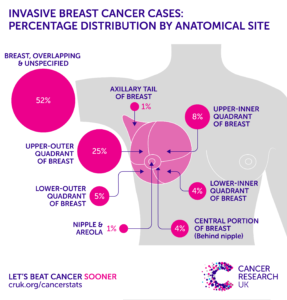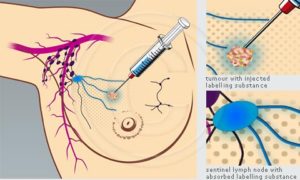Oncological Options
Riding on technological options, cancer surgery has evolved significantly in recent years, making a qualitative difference in the lives of patients
By Abhigyan/Abhinav
With the advancement of latest technology, surgery in cancer remains the most effective of all options available for cancer treatment. In fact, surgery has a part to play at all stages from the diagnosis to palliation. Cancer surgery is a highly specialised branch requiring years of intense training, a multidisciplinary team and good paramedical backup. Considered to be the most effective of all options available for cancer treatment, minimally invasive surgery is in increasing demand these days.
Cancer is a group of several hundred entities that can begin almost anywhere in the body. It happens when normal cells in the body change from their native state and grow uncontrollably. These cells may form a mass called a tumour. A tumour can be either malignant (cancerous, meaning it can spread to other parts of the body) or benign (noncancerous). However, some cancers do not form solid tumours. These are called haematological malignancies. These include leukaemia, most types of lymphoma and myeloma (cancer of the plasma cells in the bone marrow, the spongy tissue inside of bones).
Types of surgery
Diagnostic: For most types of cancer, biopsy is the only way to make a definitive diagnosis. During a surgical biopsy, the surgeon makes a cut in the skin and removes some or all of the suspicious tissue. There are two main types of surgical biopsies. An incisional biopsy is the removal of a piece of the suspicious area for examination. An excisional biopsy is the removal of the entire suspicious area, such as an unusual mole or a lump.
 After a biopsy, the tissue removed is examined under a microscope by a pathologist. A pathologist is a doctor who specialises in interpreting laboratory tests and evaluating cells, tissues, and organs to diagnose disease. The pathologist provides a pathology report to the surgeon or oncologist, who makes the diagnosis.
After a biopsy, the tissue removed is examined under a microscope by a pathologist. A pathologist is a doctor who specialises in interpreting laboratory tests and evaluating cells, tissues, and organs to diagnose disease. The pathologist provides a pathology report to the surgeon or oncologist, who makes the diagnosis.
Staging: Staging surgery is performed to find out the size of the tumour and if or where it has spread. This often includes removing some lymph nodes, which are tiny, bean-shaped organs that help fight infection, near the cancer to find out if it has spread there. Together with the physical examination, biopsy, and results of laboratory and imaging tests, this surgery helps the doctor decide which kind of treatment is best and predict the patient’s prognosis, that is, the chance of recovery.
Curative or primary surgery: The most common type of cancer surgery is the removal of the tumour and some of the tissue surrounding the tumour. The tissue surrounding the tumour is called the margin. Tumour removal may be the only treatment, or it may be combined with chemotherapy, radiation therapy, or other treatments, which may be given before or after surgery.
Conventional surgery requires large cuts, called incisions, through skin, muscle, and sometimes bone. However, in some situations, surgeons can use surgical techniques that are less invasive, which may speed up recovery and reduce pain afterwards.
Debulking: When the complete removal of a tumour is not possible or might cause excessive damage to the body, surgery is used to remove as much of the tumour as possible. Other treatments, such as radiation therapy or chemotherapy may sometimes also be used to shrink the remaining cancer.
Palliation: Palliative surgery is used to relieve side effects caused by a tumour. It plays an important role in improving quality of life for patients with advanced cancer or widespread disease. Surgery may be used to help relieve pain or restore physical function if a tumour presses on a nerve or the spinal cord, blocks the bowel or intestines, or creates pressure or blockage elsewhere in the body. Surgery may be used to help stop bleeding. Certain cancers are more likely to cause bleeding because they occur in areas with a high concentration of blood vessels, such as the uterus, or organs in which the tumours are fragile and can easily bleed when food and waste products pass through, such as the esophagus, stomach, and bowel. In addition, bleeding may be a side effect of some drugs used to treat cancer. When surgery is needed to stop bleeding, a common technique is suture ligation, which involves tying blood vessels using surgical thread. Surgery may be used to insert a feeding tube or tubes that deliver medications. If the cancer or cancer treatment has made it difficult to eat, a feeding tube may be inserted directly into the stomach or intestine through the abdominal wall. Or a tube may be inserted into a vein to deliver pain medication or chemotherapy. Surgery may be used to prevent broken bones. Bones weakened by cancer or cancer treatment can break easily and often heal slowly. Inserting a metal rod may help prevent fractures of weak bones and relieve pain during healing.
Reconstruction: After primary cancer surgery, surgery may be an option to restore the body’s appearance or function. This is called reconstructive or plastic surgery. Reconstructive surgery may be done at the same time as surgery to remove the tumour. Or, it may be done later after a person has healed or received additional treatment. Examples of reconstructive surgery include breast reconstruction after a mastectomy and surgery to restore a person’s appearance and function after surgery to the head and neck area.
Prevention: Some surgery is performed to reduce the risk of developing cancer. For example, doctors often recommend the removal of precancerous polyps in the colon to prevent colon cancer. In addition, women with a strong family history of breast or ovarian cancers or known mutations to the BRCA1 and BRCA2 breast and ovarian cancer genes may decide to have a mastectomy, which is the removal of the breast, or an oophorectomy, which is the removal of the ovaries, to lower the risk of developing breast or ovarian cancer in the future.
Types of minimally invasive surgery
 As mentioned above, conventional surgery often requires large incisions. However, in some situations, surgery can be performed through one or more small incisions, which typically results in shorter recovery times and less pain afterwards. Below are some examples of minimally invasive procedures and surgeries:
As mentioned above, conventional surgery often requires large incisions. However, in some situations, surgery can be performed through one or more small incisions, which typically results in shorter recovery times and less pain afterwards. Below are some examples of minimally invasive procedures and surgeries:
Laparoscopic surgery: The doctor performs surgery through small incisions in the skin using a thin, lighted tube with a camera. For example, a laparoscopy refers to a minimally invasive surgery of the abdomen, and mediastinoscopy and thoracoscopy are terms used when the same type of procedure is performed in the chest.
Laser surgery: The doctor uses a narrow beam of high-intensity light to remove cancerous tissue.
Cryosurgery: The doctor uses liquid nitrogen to freeze and kill abnormal cells.
Mohs micrographic surgery also called microscopically controlled surgery: The dermatologist shaves off a skin cancer, one layer at a time, until all cells in a layer appear to be normal cells when viewed under a microscope.
Robotic Surgery: This is the latest in minimally invasive techniques of cancer surgery in which the operating surgeon uses a robotic system to perform the surgery. The surgeon is sitting comfortably on the console at some distance while the robot is performing the operation based on the instructions of the surgeon. This system has several advantages like better magnification, degrees of movement, 3D vision and faster rehabilitation. However, the steep cost is the limiting factor.
Endoscopy: The doctor inserts a thin, flexible tube with a light and camera on the tip, called an endoscope, into an opening of the body (such as the mouth, rectum, or vagina) to examine the internal organs. During an endoscopic procedure, it is possible to remove samples of potentially abnormal tissue for further examination.
Role of Surgery
Surgery is the removal of the tumour and surrounding tissue during an operation. A doctor who specialises in surgical treatment of cancer is called a surgical oncologist. Surgery is the oldest type of cancer therapy and remains an effective treatment for many types of cancer today. The goals of surgery vary. It is often used to remove all or some of the cancerous tissue after diagnosis. However, it can also be used to diagnose cancer, find out where the cancer is located, whether it has spread, and whether it is affecting the functions of other organs in the body. In addition, surgery can be helpful to restore the body’s appearance or function or to relieve side effects.
The location where you have surgery depends on the extent of the surgery and how much recovery is needed. Surgery may be performed in a doctor’s office, clinic, surgical centre, or hospital. Outpatient surgery means that you do not need to stay overnight in the hospital before or after surgery. Inpatient surgery means that you do need to stay in the hospital overnight or longer to recover after the surgery.
The diagnosis of cancer begins when a person reports any unusual symptoms. After discussing a person’s medical history and his or her symptoms, the doctor will perform various tests to find out the cause of the ailment. However, many times a person with cancer has no symptoms. Sometimes a doctor diagnoses cancer after a cancer screening test in an otherwise healthy person. Examples of screening tests include a colonoscopy, a mammogram, and a pap test. The results of these tests may necessitate additional tests to confirm or disprove the result of the screening test. Less often, cancer is diagnosed when a person undergoes a medical test for another reason. For most cancers, a biopsy is the only way to make a definitive diagnosis. A biopsy is the removal of a small amount of tissue for further study. The cancer treatment options that the doctor recommends depends on the type and stage of cancer, possible side effects, and the patient’s preferences and overall health. In cancer care, different doctors often work together to create a patient’s overall treatment plan that combines different types of treatment. This calls for a multidisciplinary team..


